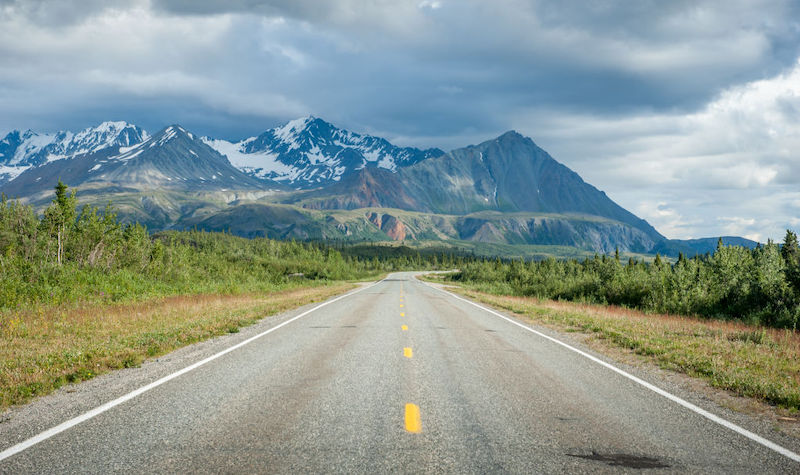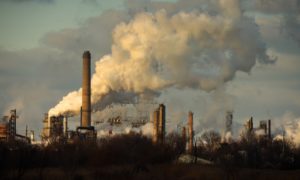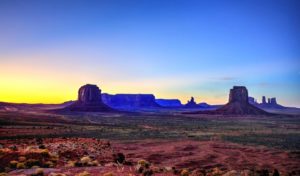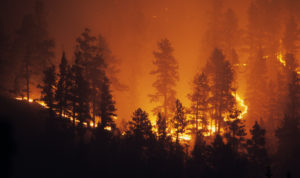
Despite protests, the U.S. government has opened the largest forest in North America to industrial activity.
The U.S. government has opened up to logging an Alaskan forest known as “the lungs of the North America,” despite the collapse of consumer demand for timber in recent decades. In response, Alaskans have protested that more logging threatens the only booming industry in their region: ecotourism.
The protests center on a new rule from the U.S. Department of Agriculture (USDA) that exempts the Tongass National Forest from the “roadless rule,” a regulation that limits road construction and timber harvesting in designated wild areas. Made effective in 2001, the roadless rule barred most new development on 58 million acres of national forestland, including 9.4 million acres in the Tongass.
Supporters of the new Tongass exemption from the roadless rule argue that rolling back protections in the Tongass will boost the Alaskan economy. U.S. Senator Lisa Murkowski (R-Alaska) predicts that the latest exemption will increase Alaskans’ access to “affordable and renewable energy” and expand transportation infrastructure and job opportunities for isolated communities in the Tongass region. Murkowski also notes that, although 9.4 million acres are now open to development, the other 7 million acres of Tongass forestland are still protected.
On the other hand, Alaskan communities and natives have protested the recent Tongass exemption. Ninety-six percent of public comments on USDA’s proposal to lift the development ban objected to the idea. Many critics expressed concern that lifting the ban in the Tongass would adversely affect ecotourism, fishing, and hunting, which are the Tongass region’s economic engine. The ecotourism industry supports 26 percent of jobs in southeastern Alaska, injects more than $480 million into the regional economy annually, and employs over 11,000 people.
By contrast, less than 1 percent of regional jobs are tied to timber. Most Tongass logs are now exported to Asia before processing, resulting in fewer processing jobs in Alaska. In fact, in 2011 a federal court rejected USDA’s claim that a development ban in the Tongass region would lead to job losses, due to the agency’s lack of evidence for this assertion.
The Tongass tourism industry is rooted in the forest’s pristine beauty. Although its old-growth trees are the most commercially valuable lumber in the country, they also make the Tongass forest “America’s Amazon”—the most “biologically rich” timberland in the United States. Logging the forest’s old-growth trees could also smother some of the world’s last healthy salmon streams with sediment, harm the nation’s largest-known concentration of bald eagles, and threaten other natural habitats.
Encompassing 16.7 million acres—an area roughly the size of West Virginia—the Tongass forest also serves as an enormous carbon sink. Scientists estimate that if the old-growth forest now open to logging is cut down, losses in greenhouse gas absorption will be equivalent to adding about 10 million cars to the road annually.
The U.S. Forest Service did not have to open so much of this environmentally valuable land to development. In fact, the agency considered six possible alterations to the roadless rule for the Tongass forest, with one option conserving 80 percent of the land. In the end, however, the agency supported lifting the entire roadless rule for 9.4 million acres in the Tongass area, based on its conclusion that a full rule exemption “would not significantly harm the environment.”
But critics of the rule exemption question this claim. Some scientists argue that the Forest Service disregarded its own prior findings that cutting down trees in the Tongass would release harmful amounts of greenhouse gases, contributing to climate change and worsening wildfires and storms. Other scientists dismissed the agency’s environmental impact statement for the exemption, which downplayed carbon dioxide emissions released from logging, as unsupported “junk science.”
Indigenous tribes have also criticized the Tongass exemption. For over two years, tribes advocated modest rollbacks to the Tongass roadless rule by participating in Forest Service procedures. In particular, the tribes sought to preserve the rule’s protections of their cultural and sacred sites in the Tongass. When USDA proposed a full exemption for the Tongass, tribal leaders were stunned. In July, nine tribes petitioned the agency for a new rulemaking process. They followed up in October to protest that their input has been “disregarded” at “every turn” and to demand an updated environmental impact statement reflecting their withdrawal of cooperation.
Tribes argue that the roadless rule is crucial because all other avenues to protect their cultural rights have been exhausted. The U.S. government lacks any specific mechanism for preserving tribal uses of public lands. Although national monument designations have been used for this purpose, their protective appeal was undermined by the Trump Administration’s review of such designations, and by the opening of a national monument encompassing sacred tribal land to oil and gas drilling in 2017. But so far, oil and gas companies expressed little interest in developing leases on the opened monument, due to the costs of mining remote areas and a plummeting demand for coal.
Although the Tongass roadless rule exemption could lead to an increase in logging, it also may develop into a similar story of enthusiastic deregulation met with tepid market demand. Despite the Trump Administration’s efforts to increase logging, the national demand for timber has declined steeply—and the public has borne the costs. Over the last forty years, U.S. taxpayers have paid $44 million each year in subsidies to ensure that Tongass timber harvesters turned a profit. More broadly, taxpayers lose nearly $2 billion annually to subsidies for federal logging programs on public lands.
In light of the timber industry’s expensive decline, perhaps Alaskan ecotourism—and its reliance on old-growth trees—might simply ensure that the Tongass forest roadless rule exemption is functionally a road to nowhere. And, of course, the ultimate fate of the roadless rule may depend on how the Biden Administration crafts federal forest policy in 2021 and beyond.



